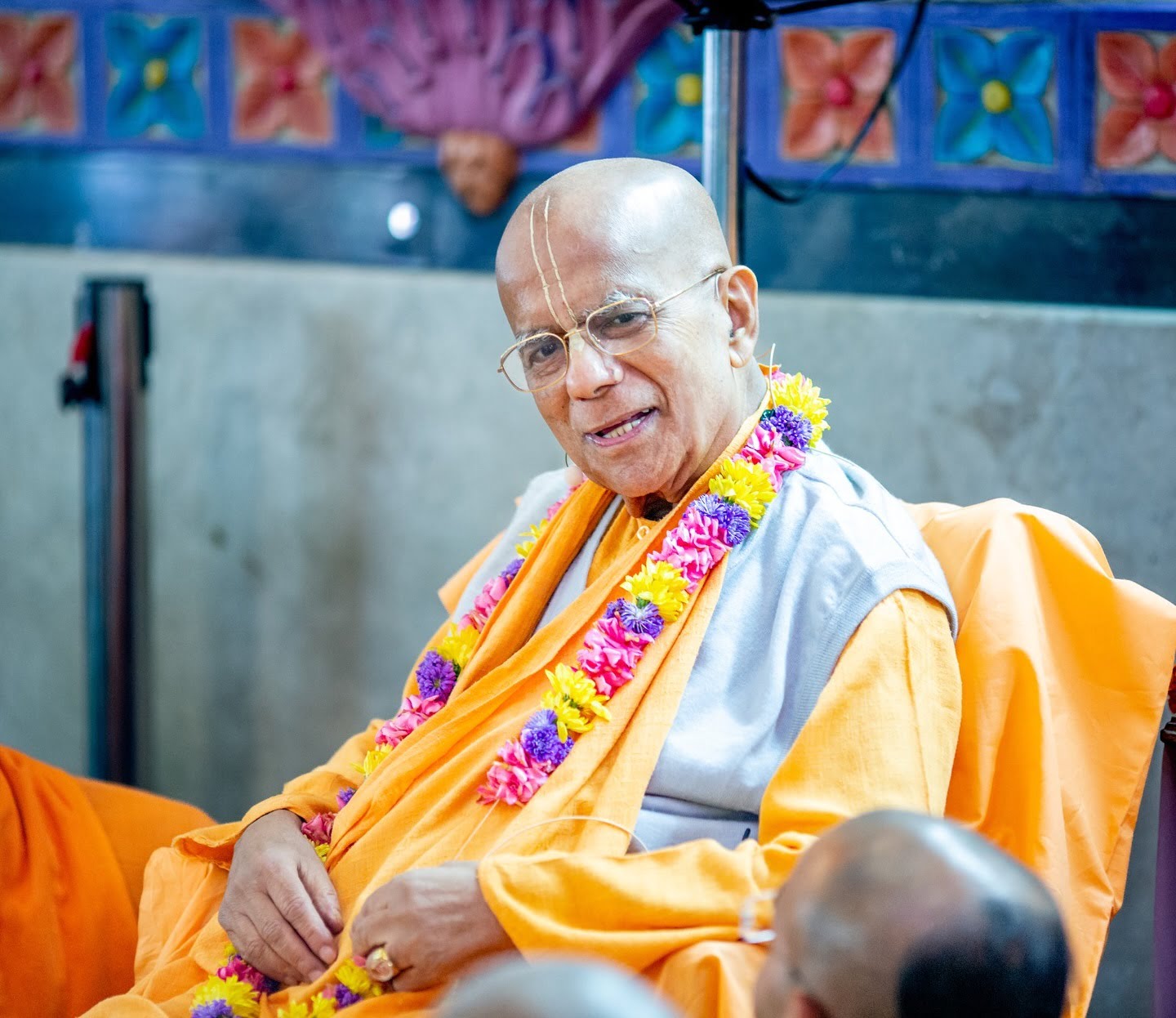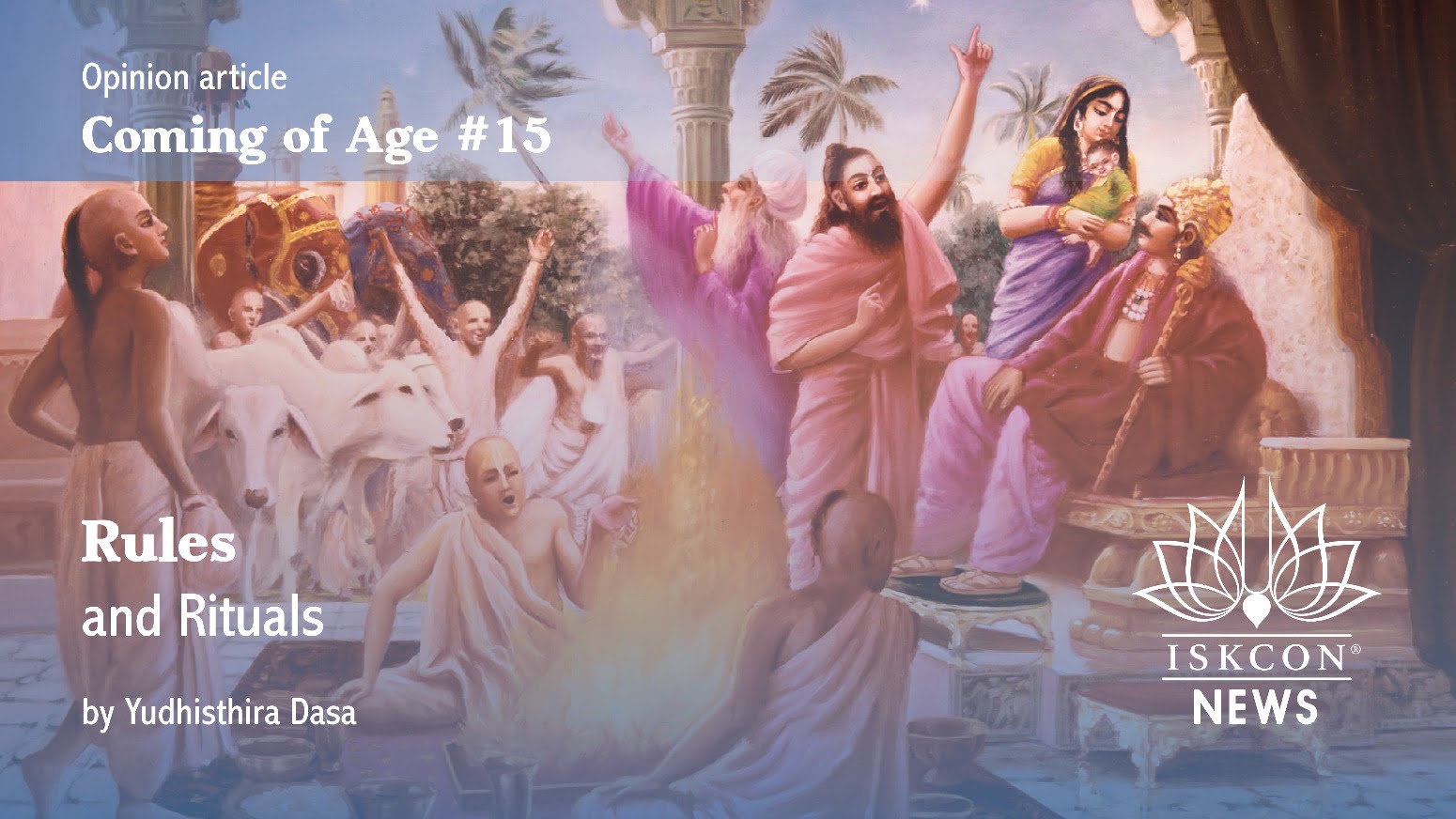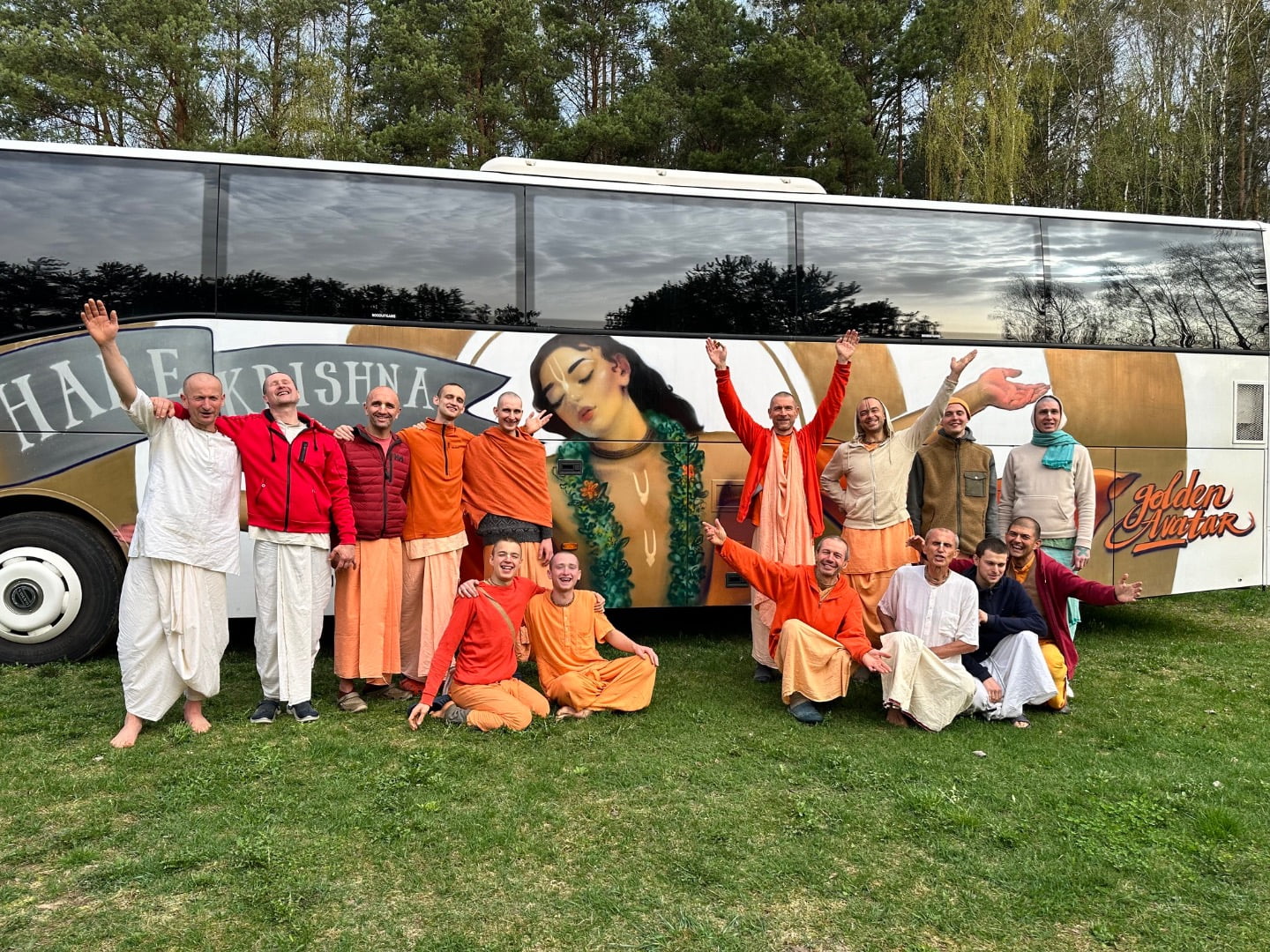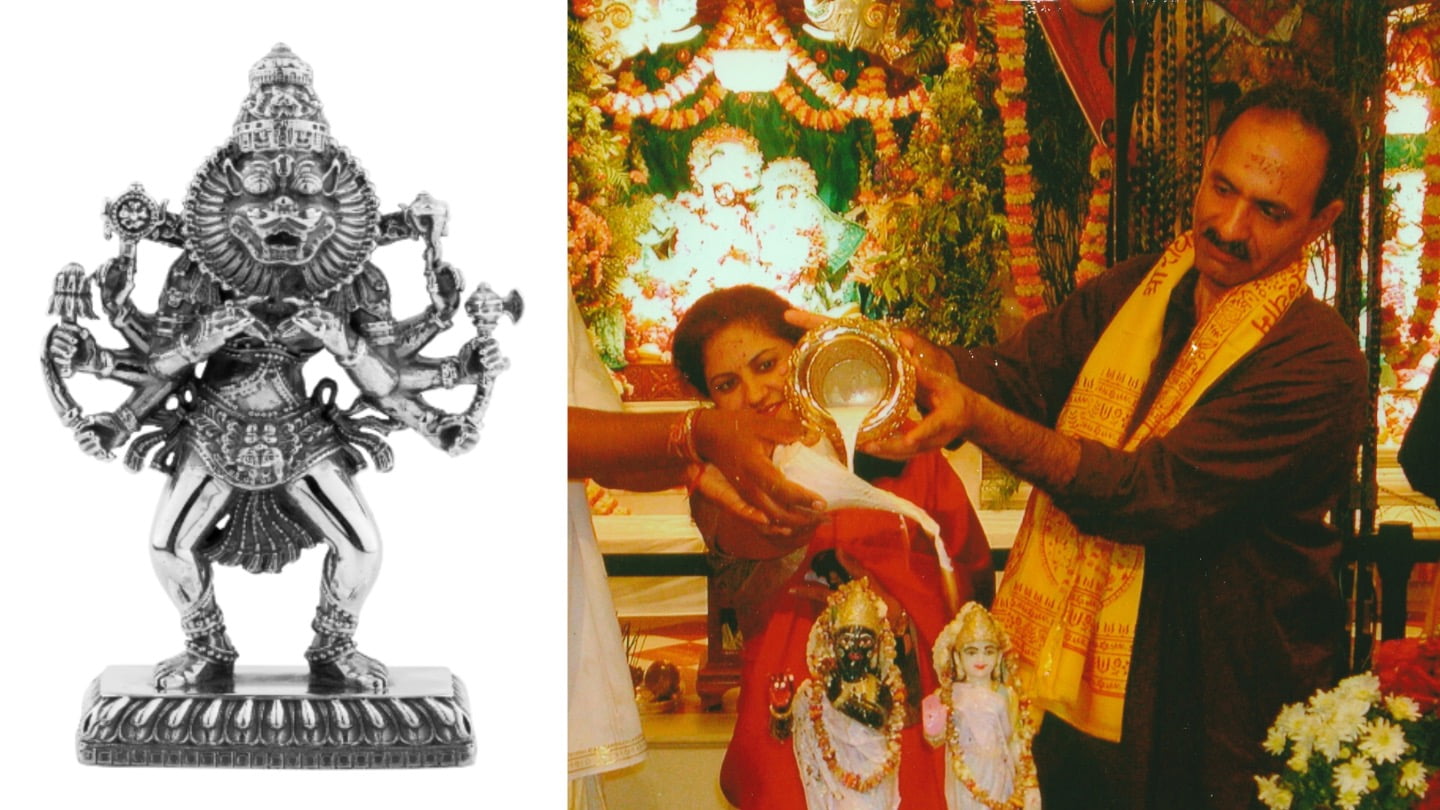Temple Profile: Hong Kong
By Madhava Smullen | Oct 01, 2011
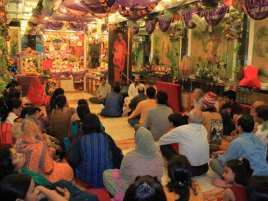
Name: International Society for Krishna Consciousness of Hong Kong.
Address: 6/F, Oceanview Court, 27 Chatham Road South, Tsim Sha Tsui, Hong Kong.
Phone: (852) 2739 6818/9
Website: www.iskconhk.org
Presiding Deities: Sri-Sri Gaura-Nitai.
Management: Rather than a single president, the temple is run by a Management Council, comprising of six devotees.
Opened on: Govardhana Puja Day 1987.
Temple Style: The temple is housed in a 3,000 square-foot apartment, on the 6th floor of a residential and commercial building. It is partitioned into two distinct areas—on one side is the temple room, offices, kitchen, and main entrance, while on the other is the prasadam area, yoga studio, and gift shop.
Location: The temple is located right in the center of Hong Kong’s busy Tsim Sha Tsui business district, which has a fairly large Indian population. It is 15 minutes’ walk from a reputable university, and 10 minutes from Hong Kong’s world-famous harbour front which draws millions of tourists and local people every year. The temple is easily accessible by the nearby Mass Transit Railway (MTR) subway station, by bus or taxi, and people often drop by to see the Deities or take prasadam even during their work day.
Distinctive food offerings: In addition to traditional Vedic style offerings, Sri-Sri Gaura-Nitai are served Western, Italian and Cantonese fare. This includes dumplings, steamed buns, dim sum, mooncakes, noodles, soup, spring rolls, and traditional Chinese sweets.
Number of residents: Since real estate in Hong Kong is one of the most expensive in the world, and space is at a premium, full-time devotees live outside the temple and come daily to attend the morning program and serve. There is an active congregation of about sixty devotees who come regularly to assist in various services, and help to organize festivals.
Number of visitors: On average, 400 people visit the temple per week.
Best time of year to visit: The Hong Kong temple, although small, is always busy, and worth visiting at any time. However, the annual Ratha Yatra festival on Christmas Eve and the Maha Harinama on New Year’s Eve are major highlights. With the streets closed to vehicles, and everyone out celebrating, thousands get the chance to see the Lord and hear His Holy Names.

In the fearless spirit exhibited by many of Srila Prabhupada’s early disciples, it was Bhurijana Dasa and his wife Jagattarini Dasi who left the US on their spiritual master’s order to bring Krishna consciousness to Hong Kong in the early 1970s.
The two were completely alone. They had nothing—no temple, no money, and no other devotees. But still, they went from door to door, giving Krishna
consciousness to others in the form of books and magazines, and persisting through the challenging times because of their love for Srila Prabhupada.
Later on, Tamal Krishna Goswami built upon their foundations. And in 1972 and 1974, Srila Prabhupada himself visited Hong Kong, where he gave a talk to a group of Indian businessmen and their families at the Park Hotel in Tsim Sha Tsui, a mere five-minute walk from the current temple.
With Srila Prabhupada’s blessings, and the sincere efforts of his disciples, an ISKCON center opened in Hong Kong in 1981—a small flat in the district of Ho Man Tin.

After operating from there for many years, GBC Tamal Krishna Goswami and Giridhari Swami rallied the devotees around, raised funds, and oversaw the design and construction of a new 2,000 square foot temple in the Tsim Sha Tsui business center, with help from the local Indian community.
With a grand opening on Govardhana Puja day in 1987, the temple was officially inaugurated by Mrs. Rani Hiranand, president of the Indian Arts Circle and a member of Hong Kong’s well-known Harilela family. By the mid-1990s, an adjoining premise had been acquired by the temple, bringing its total area to 3,000 square feet.
“Devotees would go out on book distribution every day in those early days, and as a result many local Chinese people joined ISKCON, and devoted their lives to serving the mission of Lord Chaitanya,” says Sri Radhika Dasi, a member of the current temple’s Management Council. “Also, knowing the Chinese people’s love for food, we organised vegetarian cooking classes and launched a sister organization called The Higher Taste Vegetarian Club, which ran a restaurant on the temple premises and provided many office workers in the area with vegetarian lunches.”
The International Yoga Institute (IYI), a brainchild of Tamal Krishna Goswami that dates back to a time when few in Hong Kong had even heard the word “Yoga,” also proved to be an effective way to reach people and teach them about healthy living and the science of Bhakti Yoga.

“We are successful because life in Hong Kong—the financial hub of Asia and a very international city—is fast paced and stressful,” Sri Radhika says. “Our temple provides a welcome sanctuary in the midst of the busy city life, for people to chant, meditate, honor prasadam, and re-establish some balance in their lives. It helps that there are some similarities between the Chinese and Vedic cultures—so our philosophy is not totally alien to the local Chinese people.”
Today, the Hong Kong temple buzzes with activity, and reaches out to the local community in a myriad of ways.
Academia is a well-developed area, inspired once again by Tamal Krishna Goswami, an academic himself who worked to bring Krishna consciousness into the field.
In October 2007, ISKCON collaborated with The Chinese University of Hong Kong to establish a first-of-its-kind Professorship in Indian Religions and Culture.
Professors Krishna Ksetra Dasa and Isvara Krishna Dasa teach undergraduate and graduate courses on “Sacred Geography in India”; “Yoga and Meditation in Indian Traditions”; “Love in Indian Culture”; and many more. The courses have had such an impact that several students have become practicing ISKCON devotees.
Meanwhile, the Krishna Yoga Club, formed by students of the university, has around sixty members and distributes free prasadam on campus, as well as giving
demonstrations of Vaishnava music and Henna hand painting.

“Also, we were very happy that despite the presence of other Hindu temples in the city, ISKCON Hong Kong was chosen by the organizers of the University’s Harmony in Diversity Project to represent ‘Hinduism’”’ says Sri Radhika. “This program, which more than fifty schools participate in, provides an opportunity for students to connect with and learn about the different cultural and religious practices that make up the diverse society of Hong Kong. Since 2004, it has arranged for over 4,000 students from various universities, colleges and high schools to attend programs at our temple, exposing them to Vaishnava culture and traditions.”
For the past four years, devotees have also participated in the annual Hong Kong Book Fair, which features thousands of exhibitors and publishers from around the
world, and draws one million visitors from all walks of life.
“People are attracted to our booth when they see many Chinese devotees—including University educated youth—dressed up in traditional Indian attire and propagating Vedic culture,” Sri Radhika says. “We sell a good number of books, and give out thousands of flyers and prasadam cookies. Many people come to attend our regular programs and festivals at the temple after seeing us at the Fair.”
Some of these programs include two Sunday Feasts every Sunday—one for the Chinese congregation and one for the Indian congregation. For those who want to learn how to cook delicious vegetarian meals for themselves, The Higher Taste Vegetarian Club continues to offer highly popular weekly cooking classes. These have been the subject of several newspaper and magazine articles and two television programs, and have encouraged many people to adopt a healthier, more non-violent diet.

“We also hold a Vegetarian Open Day every year in honor of Srila Prabhupada’s Vyasa Puja, when we invite the public to visit our temple to honor prasadam,” says Sri Radhika. “And on Lord Buddha’s birthday—a major festival in Hong Kong—we take the opportunity to sell prasadam to the thousands of people who attend.”
In the future, ISKCON Hong Kong hopes to further consolidate and expand its activities, reaching out to more people and bringing them to the lotus feet of Lord Chaitanya. In particular, devotees plan to expand their Professorship at the Chinese University of Hong Kong into a full fledged “Centre for Hindu Studies.”
“And then there’s our big project,” Sri Radhika says. “Although real estate is expensive and scarce in Hong Kong, we are determined to find a larger premises for ISKCON Hong Kong. Our temple is getting way too small to accommodate all of our activities!”







